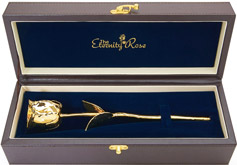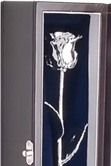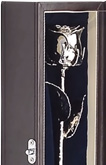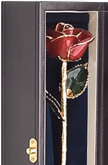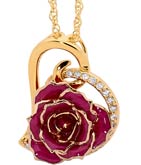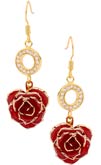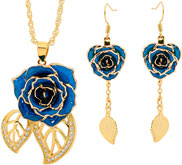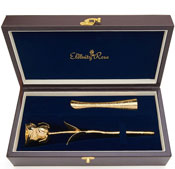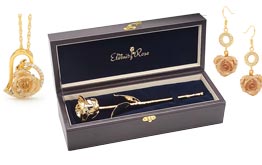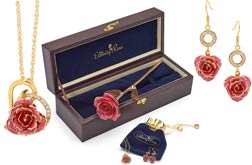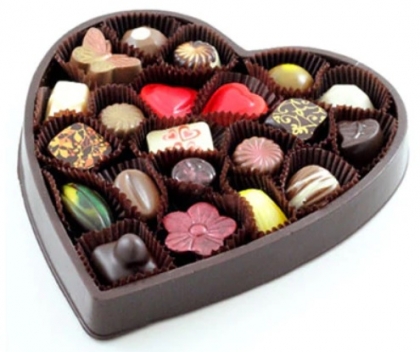How Chocolate Became a Favourite Valentine's Day Gift Choice
Valentine's Day, a celebration of love and affection, is marked by various traditions worldwide. Among them, the gifting of chocolates stands out as a universally recognised symbol of sweetness and love. The association of chocolate with Valentine's Day is not just a modern commercial phenomenon but has deep historical roots and cultural significance. This blog post explores the journey of chocolate from its ancient origins to becoming the quintessential Valentine's Day gift.
Ancient Beginnings
The story of chocolate begins over 3000 years ago in Mesoamerica, where the ancient Mayans and Aztecs revered the cacao tree. Cacao beans were so valued that they were used as currency and offered in rituals. The Mayans and Aztecs consumed chocolate as a bitter, frothy beverage mixed with spices or wine, and it was often associated with rituals, including marriage ceremonies, signifying its early link to love and commitment.
European Introduction and Transformation
Chocolate made its way to Europe in the 16th century through Spanish explorers. It was initially a luxury item enjoyed by the nobility and was still consumed as a beverage. However, its introduction to sugar dramatically transformed chocolate from a bitter drink to a sweet delicacy. By the 17th century, chocolate houses became popular in Europe, similar to today's coffee shops, where people socialised over cups of sweetened chocolate.
The Industrial Revolution and Mass Production
The Industrial Revolution in the 18th and 19th centuries was a turning point for chocolate. The invention of machines for mass-producing chocolate transformed it from an elite luxury to a treat accessible to the general public. Notably, the creation of the cocoa press by Coenraad van Houten in 1828, which separated cocoa butter from roasted cacao beans, led to the production of solid chocolate, paving the way for the creation of the modern chocolate bar.
Cadbury and the Heart-Shaped Box
A significant milestone in linking chocolate to Valentine's Day was the introduction of the heart-shaped box by Richard Cadbury in the late 19th century. As a member of the famed Cadbury chocolate manufacturing family, Richard saw an opportunity to use the excess cocoa butter from their new pure cocoa to produce "eating chocolates." He packaged these chocolates in beautifully decorated, heart-shaped boxes, which he marketed as the perfect gift for Valentine's Day. These boxes were not only attractive but also reusable, often used to store keepsakes, further entrenching the romantic connection.
Chocolate's Symbolism
The choice of chocolate as a Valentine's gift is deeply rooted in its symbolism. Chocolate has long been associated with luxury and indulgence. Its chemical properties are also said to evoke feelings of happiness and love, as it contains phenylethylamine and serotonin, chemicals that the brain produces when people fall in love. This has led to the popular belief that chocolate is an aphrodisiac, further reinforcing its connection with romance.
Modern Day Celebrations and Variations
Today, Valentine's Day and chocolate are inseparable in popular culture. The variety of chocolates available for Valentine's Day is staggering, ranging from gourmet artisan chocolates to classic heart-shaped boxes filled with assorted varieties. This diversity caters to different tastes and budgets, making chocolate an inclusive and versatile gift option.
In different parts of the world, the tradition varies slightly. For instance, in Japan, it's customary for women to give chocolates to men on Valentine's Day, with different types of chocolates signifying different types of relationships or feelings. Conversely, on White Day, a month later, men who received chocolates reciprocate the gift, often with interest.
The Ethical and Sustainable Future of Chocolate
As the demand for chocolate continues to grow, concerns about the ethical and sustainable sourcing of cacao have come to the forefront. Issues like fair trade and the avoidance of child labor in cacao farming are increasingly important to consumers. Many chocolate companies are now committed to sustainable and ethical practices, ensuring that the joy of chocolate can continue without negative social or environmental impacts.
Conclusion
The evolution of chocolate from an ancient beverage to a symbol of love and luxury is a fascinating journey intertwined with history, culture, and innovation. On Valentine's Day, when we gift chocolate, we participate in a centuries-old tradition that celebrates love in its sweetest form. It's a practice that not only signifies romance but also reflects the ever-changing social and cultural dynamics surrounding this beloved treat. As we look to the future, the story of chocolate continues, promising new developments and continued enjoyment for chocolate lovers everywhere.
In the end, whether it's a simple chocolate bar or an elaborate box of assorted truffles, the act of giving chocolate on Valentine's Day goes beyond the treat itself. It's about conveying love, affection, and thoughtfulness in one of the most universally appreciated forms. So, this Valentine's Day, as you savour the taste of chocolate, remember the rich history and profound symbolism that each piece carries. And if you want to go the extra mile, you can create your own DIY heart-shaped box to fill your partner’s favourites with.









